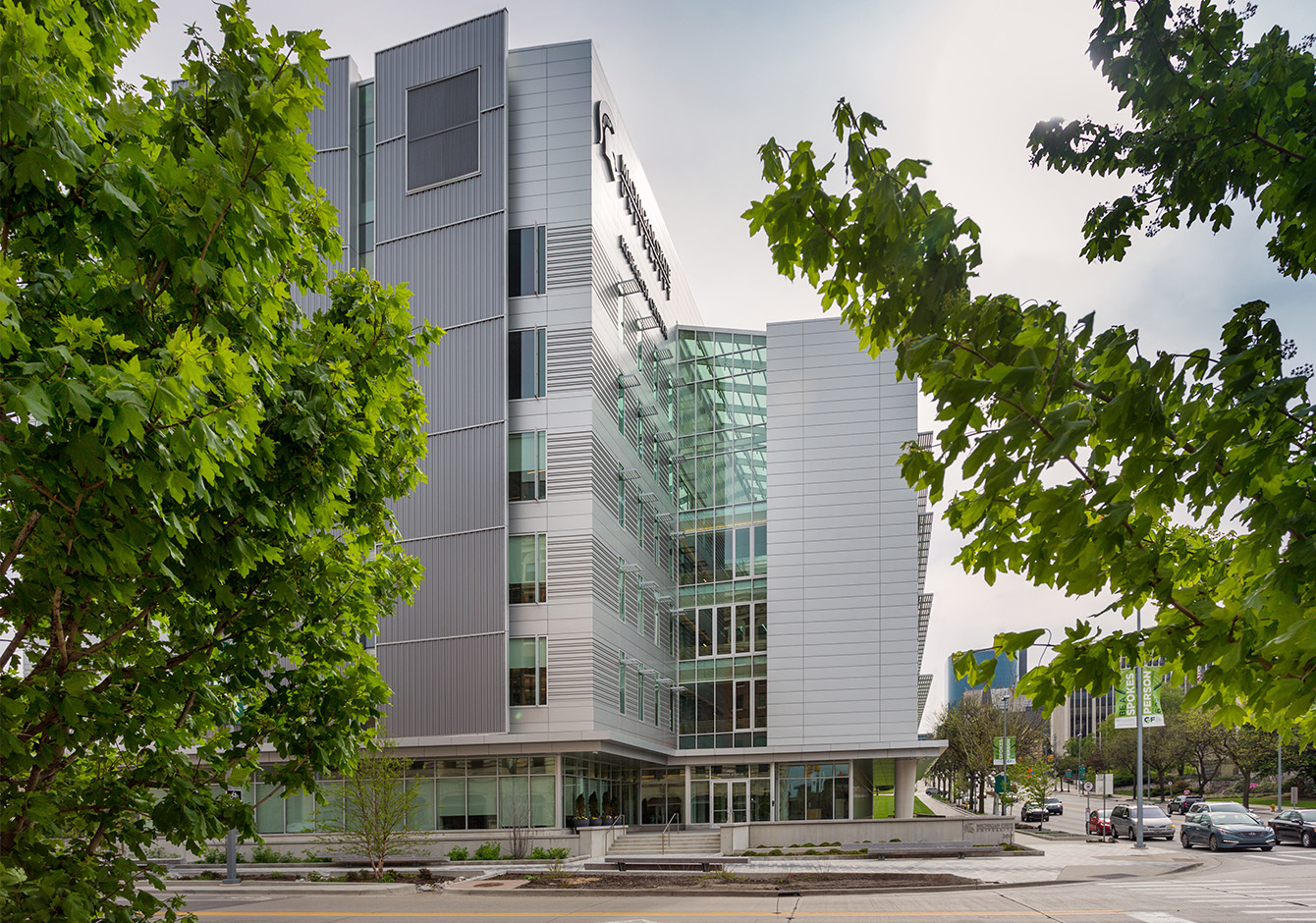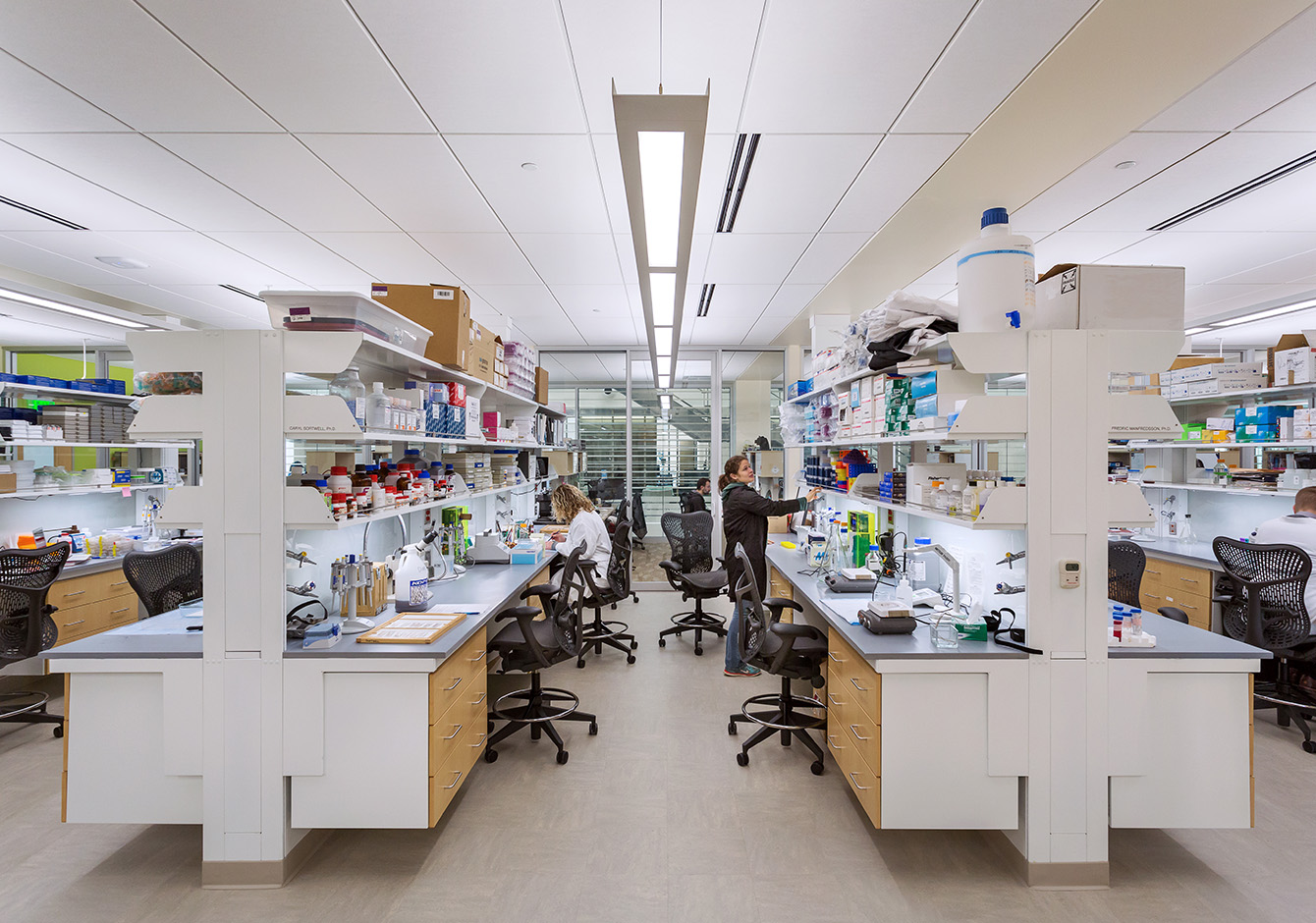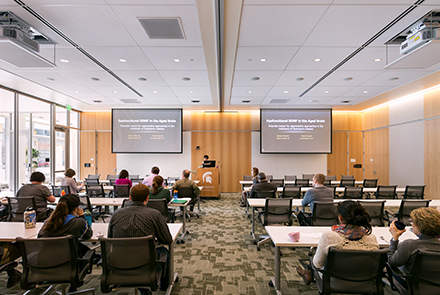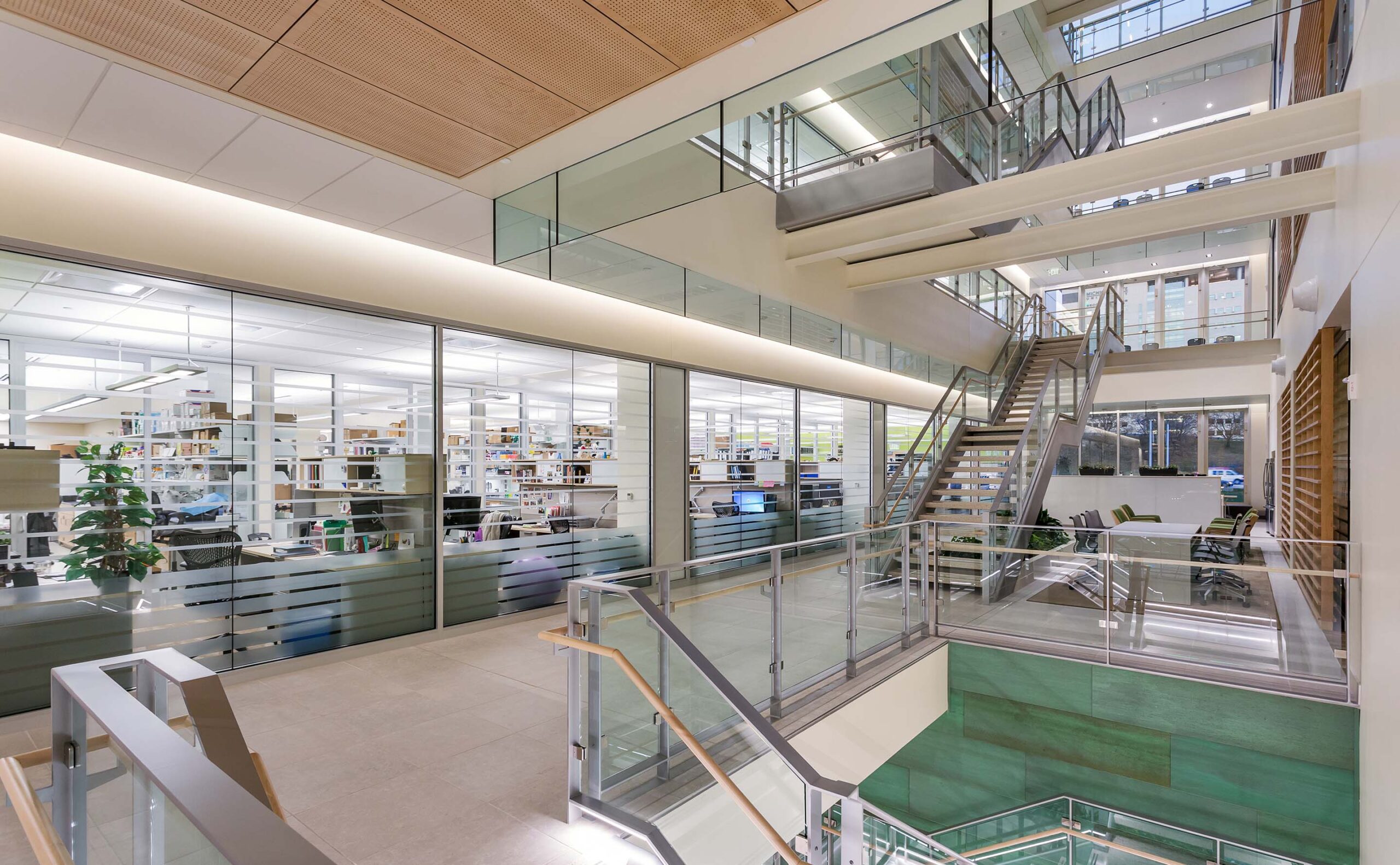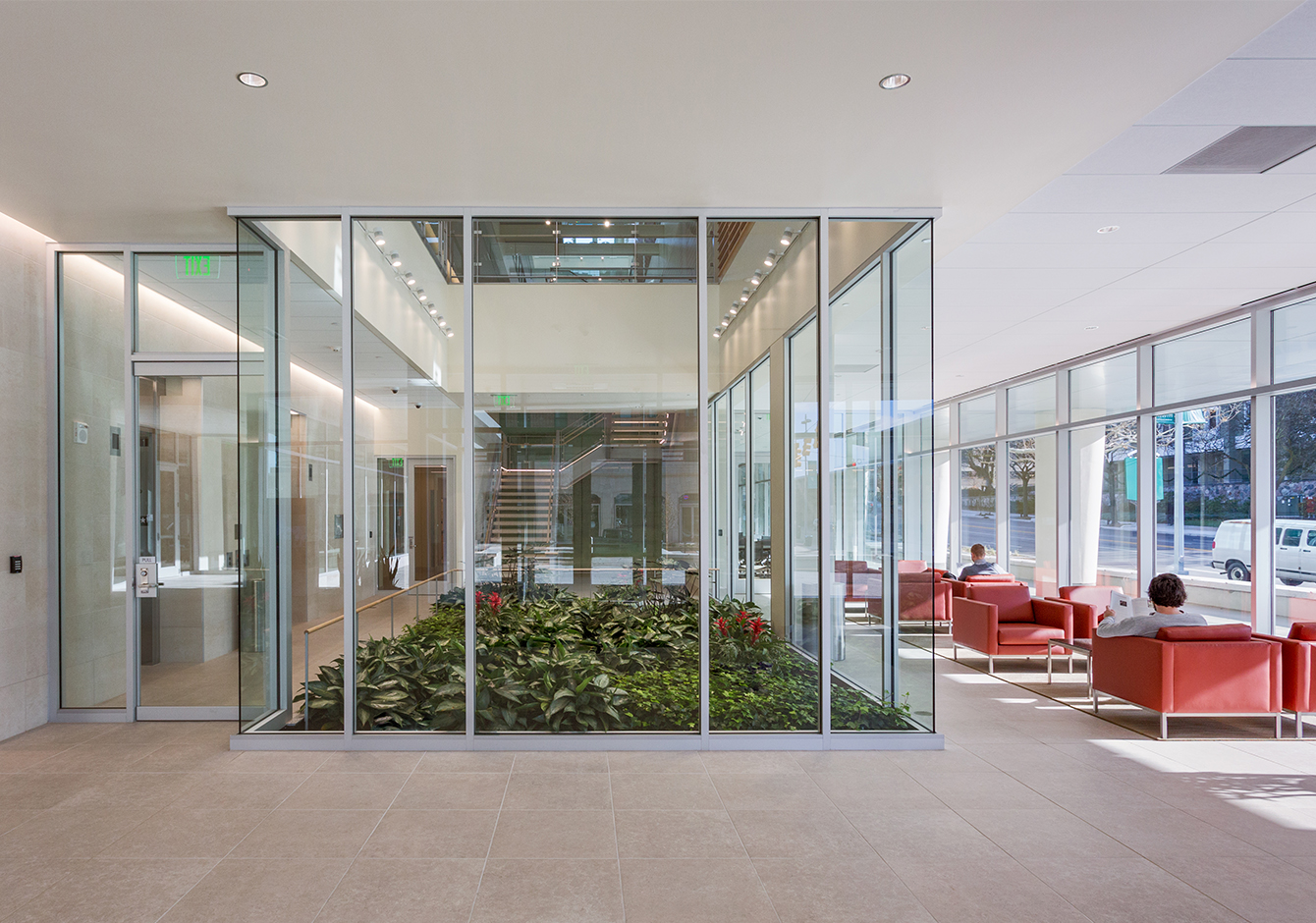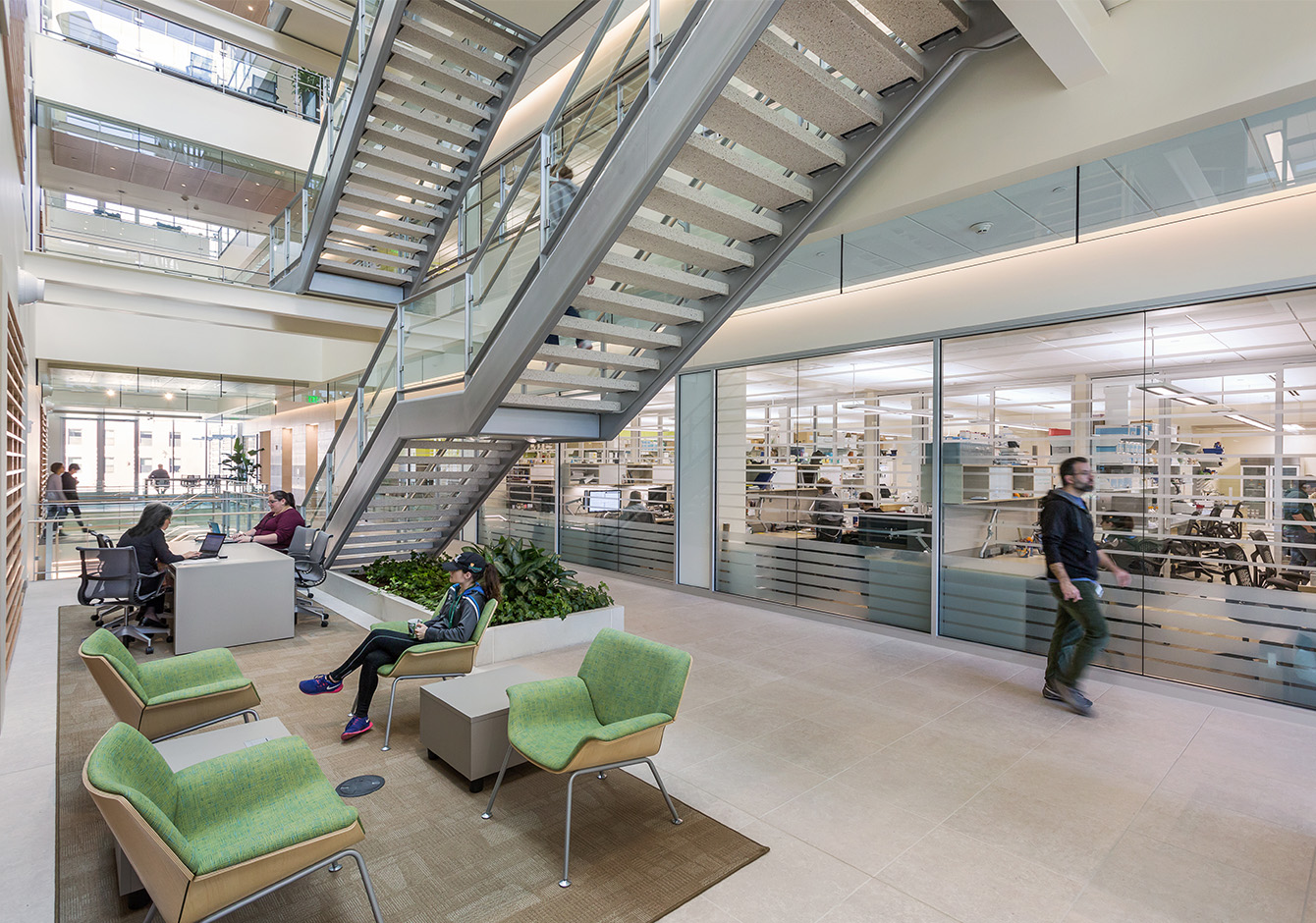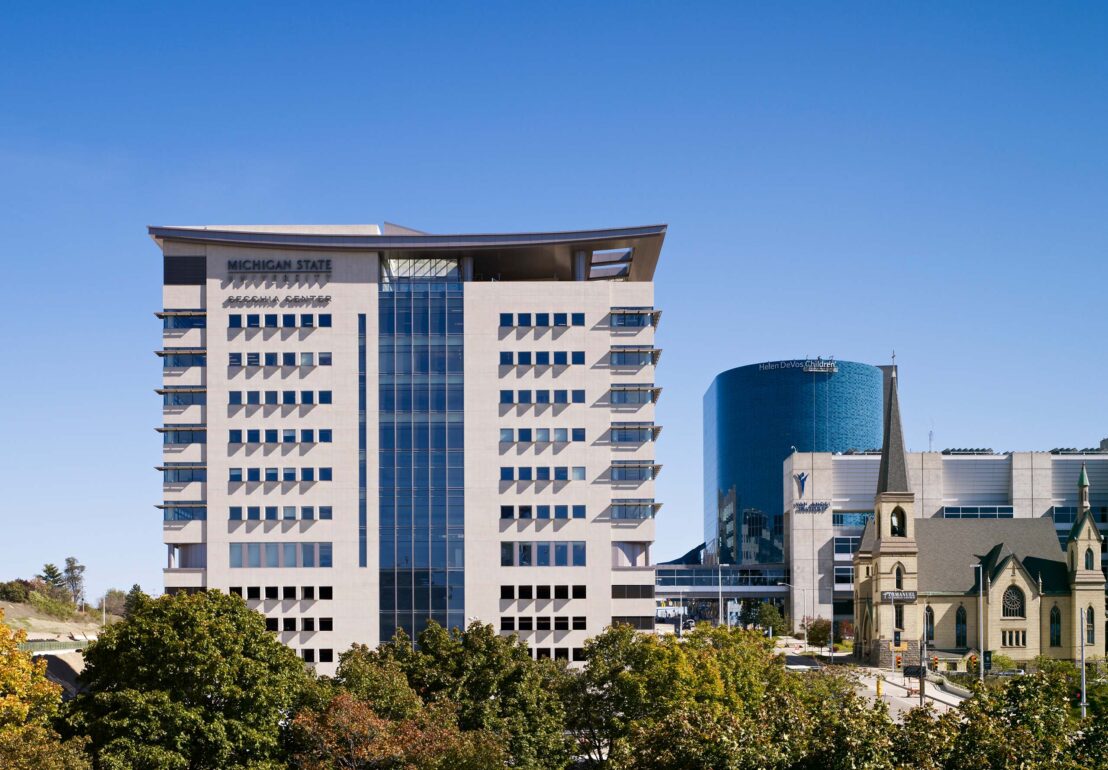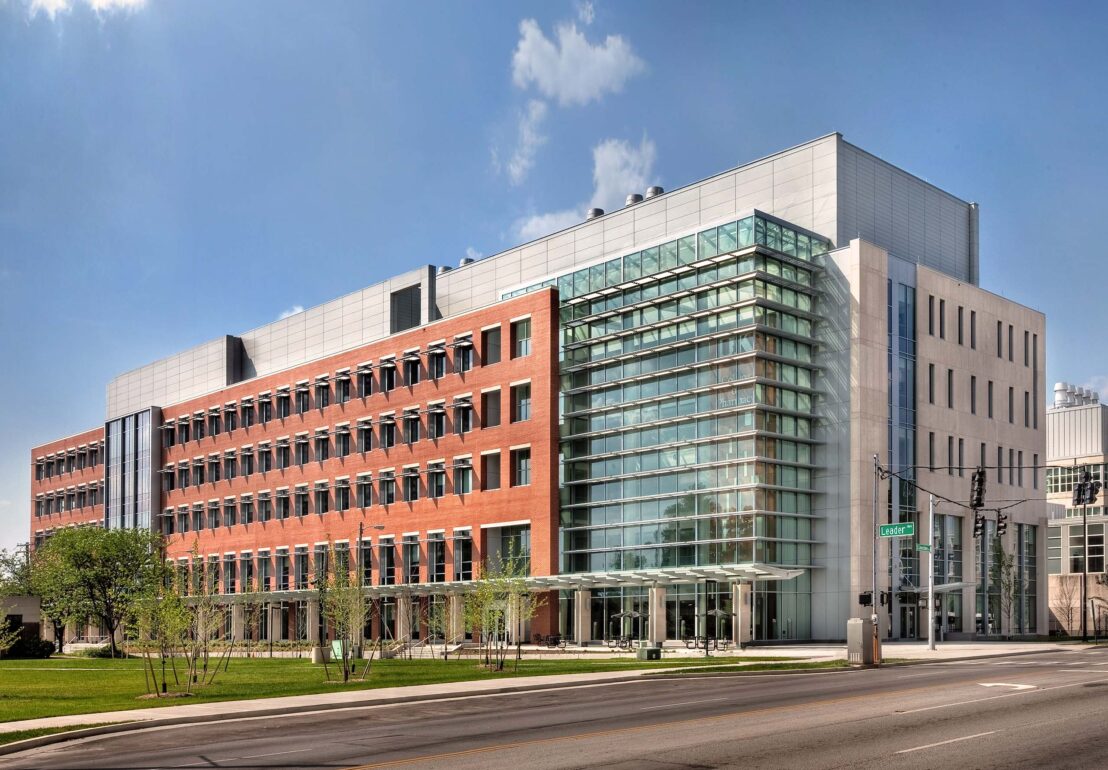The program for the building includes wet and dry bench laboratories and lab support space; researcher write-up space; a 15,000 square foot vivarium with animal holding and procedure rooms, surgery, imaging and behavioral suites, and support spaces; offices for research administration; and shared meeting, conference, break-out, and collaborative spaces. The ground floor provides administrative and building support space along with a large meeting space to accommodate research symposiums, poster sessions, thesis defense presentations, and community outreach. A centralized core laboratory suite on the first floor serves the research population in the building as well as neighboring research institutions including the Van Andel Research Institute and Spectrum Health.
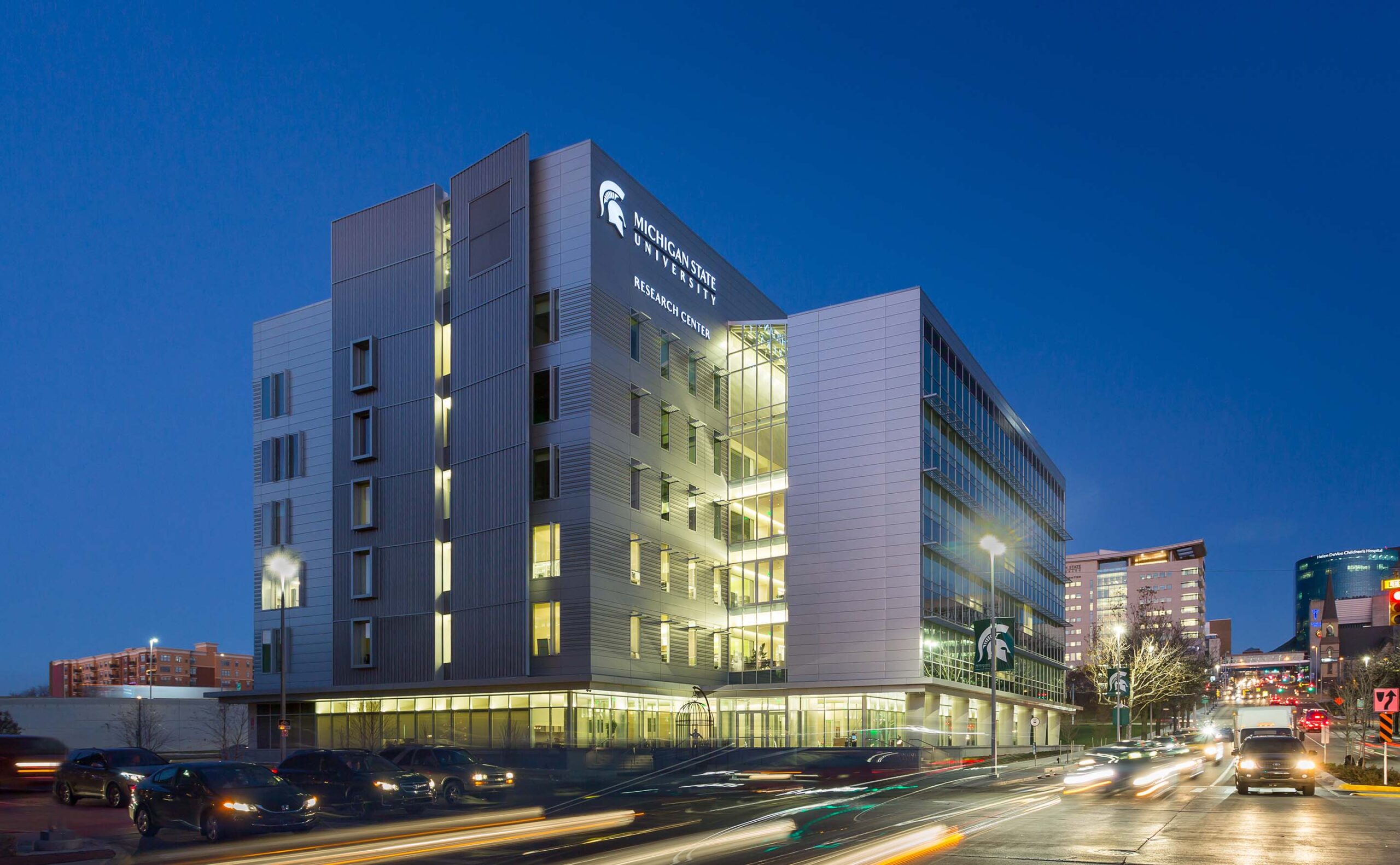
Michigan State University
College of Human Medicine, Biomedical Research Center
Grand Rapids, Michigan
Size
160,000 gsf
Services
Laboratory and vivarium planning
Architecture
Roles
Ellenzweig
Design Architect and Lab/Vivarium Planner
SmithGroup
Architect of Record
Certifications
LEED Silver
The biomedical research center realizes MSU’s vision to link education, science, research, and technology with the area’s health system and clinicians. Located in the Grand Rapids Medical Mile, an area defined by a rapidly expanding life sciences industry, the building provides research space for 36 Principal Investigators in the disciplines of Obstetrics, Gynecology and Reproductive Biology, Translational Science and Molecular Medicine, and Pediatrics and Human Development. The design provides for future expansion to accommodate 12 additional PIs and their research groups.
